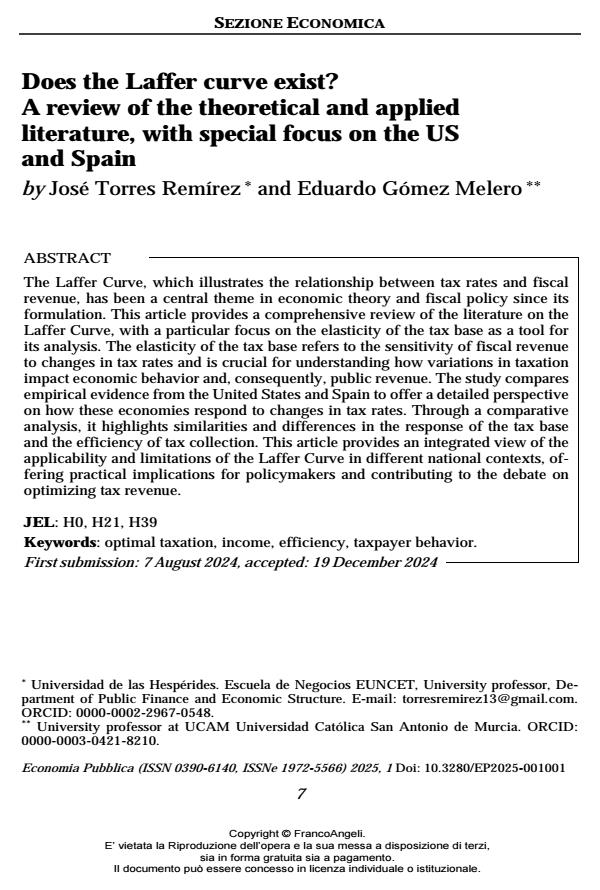Does the Laffer curve exist? A review of the theoretical and applied literature, with special focus on the US and Spain
Titolo Rivista ECONOMIA PUBBLICA
Autori/Curatori José Torres Remírez, Eduardo Gómez Melero
Anno di pubblicazione 2025 Fascicolo 2025/1
Lingua Inglese Numero pagine 25 P. 7-31 Dimensione file 152 KB
DOI 10.3280/EP2025-001001
Il DOI è il codice a barre della proprietà intellettuale: per saperne di più
clicca qui
Qui sotto puoi vedere in anteprima la prima pagina di questo articolo.
Se questo articolo ti interessa, lo puoi acquistare (e scaricare in formato pdf) seguendo le facili indicazioni per acquistare il download credit. Acquista Download Credits per scaricare questo Articolo in formato PDF

FrancoAngeli è membro della Publishers International Linking Association, Inc (PILA)associazione indipendente e non profit per facilitare (attraverso i servizi tecnologici implementati da CrossRef.org) l’accesso degli studiosi ai contenuti digitali nelle pubblicazioni professionali e scientifiche
The Laffer Curve, which illustrates the relationship between tax rates and fiscal revenue, has been a central theme in economic theory and fiscal policy since its formulation. This article provides a comprehensive review of the literature on the Laffer Curve, with a particular focus on the elasticity of the tax base as a tool for its analysis. The elasticity of the tax base refers to the sensitivity of fiscal revenue to changes in tax rates and is crucial for understanding how variations in taxation impact economic behavior and, consequently, public revenue. The study compares empirical evidence from the United States and Spain to offer a detailed perspective on how these economies respond to changes in tax rates. Through a comparative analysis, it highlights similarities and differences in the response of the tax base and the efficiency of tax collection. This article provides an integrated view of the applicability and limitations of the Laffer Curve in different national contexts, offering practical implications for policymakers and contributing to the debate on optimizing tax revenue.
Parole chiave:optimal taxation, income, efficiency, taxpayer behavior. First submission: 7 August 2024, accepted: 19 December 2024
Jel codes:H0, H21, H39
José Torres Remírez, Eduardo Gómez Melero, Does the Laffer curve exist? A review of the theoretical and applied literature, with special focus on the US and Spain in "ECONOMIA PUBBLICA " 1/2025, pp 7-31, DOI: 10.3280/EP2025-001001